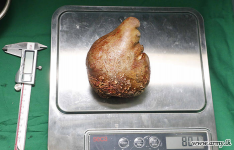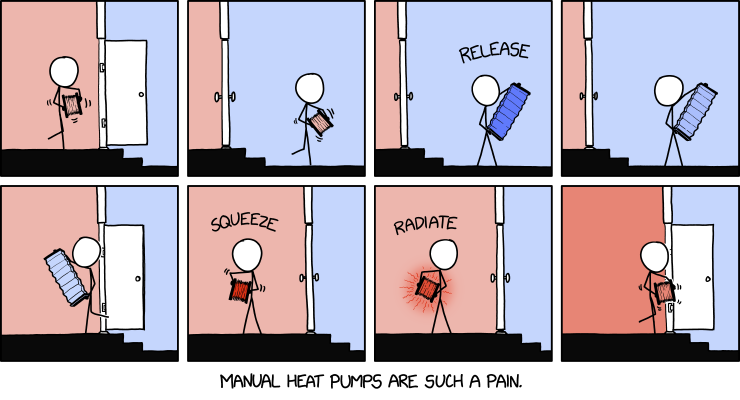What are we looking at? You've lost me there...
You are using an out of date browser. It may not display this or other websites correctly.
You should upgrade or use an alternative browser.
You should upgrade or use an alternative browser.
What are we looking at? You've lost me there...

Windows 11's latest endearing mess rigorously and wrongly enforces Britishisms
Microsoft's patchwork OS will now sometimes auto-translate Zip files to postcode files for UK users.
Carnifex
SasqWatch
Right now, as I type this message, the current heat index outside is thirty-eight C. So, I'm hanging indoors and getting my music festival on!
Here it's 27°C and will continue to be around that warm several more days. Mid June in Sweden, that's considered a heatwave.Right now, as I type this message, the current heat index outside is thirty-eight C. So, I'm hanging indoors and getting my music festival on!
Here it's steadily rising, now about 29°C, but what concerns me more is that we haven't seen a single drop of rain in about one month.
Carnifex
SasqWatch
Heat index here hit forty, then a brief shower spared us more searing, at least temporarily.
At least most of you weren't suffocating in smoke particles from the Canadian forest fires. Luckily the winds have shifted, and the air is back to being normally polluated.
Last edited:
I'll still take the heat over ice and snow any day. 
Hah!I'll still take the heat over ice and snow any day.
pibbuR who can accept the current 18 C (23:00), but fears that temperature will rise to 26 tomorrow.
PS. It's true. Temperatures above 20C makes me uncomfortably numb. The wife is visiting relatives and friends in the north (Tromsø) where tomorrow will bring a healthy 10C. Wish I were there. DS.
PPS. I still remember the first time I was in the US. Landed in Houston, temperature above 38 hit me like an invisible wall. Ouch! DS.
Mid winter here, so it only gets up to about 25 C during the day where I live. My daughter lives further north in the tropics where 28 is the winter norm. I'll be up there for a few weeks from next week!! 
Carnifex
SasqWatch
Oh man, one of the things that I don't miss about Alberta: the forest fires, literally the MOMENT after the snow stops falling. I had a lovely patio that we literally couldn't use some weeks/months during the summer time, simply because of the poor air quality.
Yeah, that's too hot. I'm not a fan of the climate in the Southwestern U.S. The combination of heat and how dry it is makes you feel like you're in an oven.PS. It's true. Temperatures above 20C makes me uncomfortably numb. The wife is visiting relatives and friends in the north (Tromsø) where tomorrow will bring a healthy 10C. Wish I were there. DS.
PPS. I still remember the first time I was in the US. Landed in Houston, temperature above 38 hit me like an invisible wall. Ouch! DS.
Otoh, 10C is a little too cool for me.
10-20°C and some water for the trees would be my ideal environment. 
20-23 and rain now and then for me10-20°C and some water for the trees would be my ideal environment.
Carnifex
SasqWatch
Seventeen to twenty C is literally perfect for me. Right now it's thirty-two and feels like thirty-four.
Payback for all the years sending Canada acid rain?At least most of you weren't suffocating in smoke particles from the Canadian forest fires. Luckily the winds have shifted, and the air is back to being normally polluated.
Actually that hasn't happened for a while as an agreement was reached in 1991.Payback for all the years sending Canada acid rain?
Canada-United States Air Quality Agreement: overview - Canada.ca
Canada-United States Air Quality Agreement Progress Report 2008
I present the "world's largest kidney stone".


The stone measured 13.372 centimeters long — or more than 5.2 inches, close to the length of an iPhone 14 Pro — and weighed 801 grams, which is about 1.76 pounds. Images published by the Sri Lankan army show the enormous thing being weighed and measured inside the operating room after the surgery.
Guinness World Records later confirmed that the kidney stone was, in fact, larger and heavier than stones that held those records previously. Before the surgery in Columbo, the largest kidney stone in the world was found in India in 2004, and measured 13 centimeters long, or about 5.1 inches. The heaviest kidney stone was found in Pakistan in 2008, and weighed 620 grams, or about 1.2 pounds, according to the Guinness directory.
"A kidney stone is a solid, pebble-like piece of material that can form in one or both of your kidneys when high levels of certain minerals are in your urine," according to the National Institutes of Health. If the stone is small, it can pass through the urinary tract without causing symptoms. When a kidney stone is larger, symptoms can include pain in the back, side, lower abdomen or groin, or blood in the urine. Medical treatments for kidney stones usually involve breaking the stone into pieces if not complete removal.
Here's one way of handig the heat:


Carnifex
SasqWatch
Speaking of the heat and no idea if it was a factor or not, my mobile literally blew up on the porch yesterday. Fortunately it happened after all the family calls due to Father's day, so at least those happened earlier. I was sitting on the porch reading and I heard a text come in, figured I'd check it in a few minutes and then saw something out of the corner of my eye and heard a slight noise. I put the kindle down and looked, saw the mobile protector lying on the concrete and the phone itself had parted face from base, I could see the glue holding some parts still together yet there was a separation of at least two cents all the way around. So, I had to get a new mobile, fun times.
I keep telling myself at least I wasn't holding it when whatever happened happened.
I keep telling myself at least I wasn't holding it when whatever happened happened.
